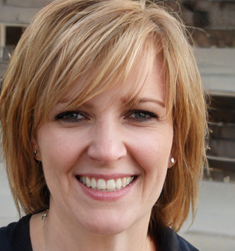3D Printer Setup: A Beginner's Guide
3D printing has so many uses. Whether you're an artist, designer, or want to be able to make your tools, 3D printing is a great way to achieve this goal- and with a 3D printer, you can do it at home! But setting up a machine can be difficult, mainly if you have never used one before. This article will teach you how to set up your 3D printer and give you the tips and tricks that will help get you started with your new machine.
3D Printer Basics
There are many different types of 3D printers. Some can print with plastic, and others can only use metal. For your printer to work, you will need some filament that you can use to make your design come to life. There are a few different filaments, but the two most common are ABS and PLA. ABS is best for projects that need strength and durability, whereas PLA is better suited for more delicate pieces. When it comes to choosing a filament, more expensive doesn't necessarily mean better quality- go ahead and print with the cheaper options when you're learning!
3D Printing Materials
3D printers typically use "fused deposition modeling" or FDM. This material is usually made of plastic, except for some other materials such as metal and thermoplastic elastomers. The printer has a heated nozzle that melts down the material and deposits it on top of the model layer-by-layer, creating an object in three dimensions. The type of 3D printing material you will use depends mainly on what you want to make. There are different types of plastics available, including ABS, PLA, PA, PCABS, POM, HIPS, and Nylon 6/6. Many people choose filament based on its cost and how quickly it prints. Filament generally refers to three different materials: 1) low-cost filaments like PLA; 2) medium-cost filaments like ABS, and 3) high-cost filaments like PPLA. It's possible to mix materials to create new colors or effects for your print.
How to Set Up Your Printer
To get the most out of your 3D printing experience, you need to set up your machine correctly. This includes using a proper filament and setting your print bed level. The first step to 3D printing is to set up your printer. It would help if you were sure you had the proper filament and calibrated your printer correctly. Calibration involves making sure all of the axes on the printer are working correctly and that it can move in an X, Y, and Z-axis.
Setting Up Your Filament
The type of filament you use also affects the quality of your print. For example, if you're printing with ABS, you want to make sure your print bed is at a temperature between 110-120 degrees Celsius (230-248 degrees Fahrenheit). If it's too hot or too cold, then it will warp during printing (and likely ruin your print). In addition, if you're using PLA, you'll want to make sure that your print bed is at a temperature between 40-50 degrees Celsius (104-122 degrees Fahrenheit). The filament won't stick to the print bed if it's too hot or cold.
Setting Up Your Print Bed Level
Levelling your print bed is also very important. This involves making sure the plate is perfectly smooth and no ridges or bumps on the surface. If you have a heated bed, it should be set to 60 degrees Celsius (140 degrees Fahrenheit) for PLA and 110 degrees Celsius (230 degrees Fahrenheit) for ABS. If you have a non-heated bed, it should be set to room temperature.
Setting Up Your Software
Once you have all the hardware set up, you need to set up your software. This includes installing your printer drivers and creating a new software project in your favorite design program (such as Tinkercad). It's also essential to ensure that the print settings are correctly configured for the filament you're using. This includes selecting the right extruder and print temperature. After you've finished setting up your printer and filament, it's time to start printing! You can find many valuable resources online that help you get started with 3D printing. The best way to learn is by doing, so get out there and start printing.
Tips and Tricks for Using Your Printer
It can be challenging to set up your printer; if you're not careful and make a mistake, there's the potential for damage or even injury. Here are some tips to keep in mind when setting up your new 3D printer.
- First, start with a small object that is relatively easy to print- this should allow you to test out different settings and understand what their effects are on the final print.
- Second, think about how you will be using the printer- if you want many prints, print materials that can dry quickly will work best. If you're printing only one item at a time, PLA material is usually recommended because it dries quickly and doesn't require too much heat.
- Third, don't use flammable materials in your 3D printer- this can lead to fire or other issues and put yourself or others in danger. Instead, use materials that don't require heating, like ABS plastic filament.
- Fourth, learn how to layer objects before printing them- this will ensure that they stick together well and give you better results overall. This process makes it easier to adapt your design as the creator changes their mind while creating the object.
Final thoughts
In summary, 3D printing is a very cool technology that will likely become more and more important in the years to come. It's also enjoyable to do. If you're interested in 3D printing, now is a great time. There are plenty of resources online to help you get started including this article. The critical thing to remember is that it's not super hard, but it does require some patience and time. If you're up for the challenge, go ahead and try it out!
